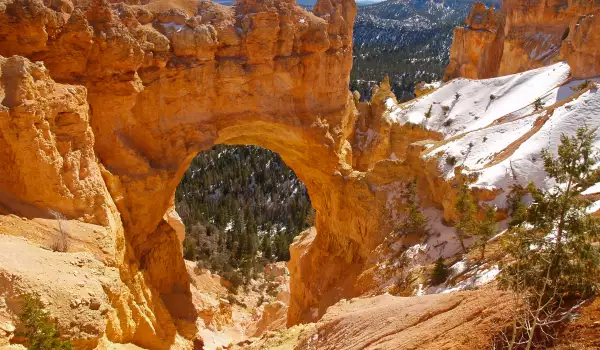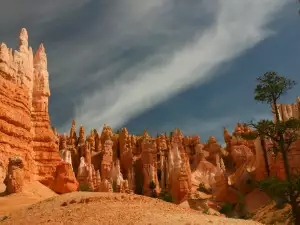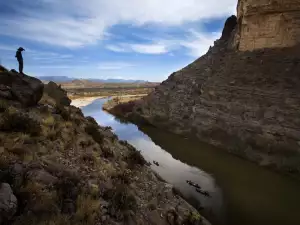Bryce Canyon National Park

Bryce Canyon National Park is one of the amazing creations of nature that can be seen in Southwestern Utah. Like magic, the hues and shapes of the rocks here are spectacular to view, especially if you watch the so-called Sunset Point - a place which not coincidentally received this name because of the amazing sunset picture it grants, in which the colors of the rocks and the sky seem to merge. Bryce Canyon is located 418 km south of Salt Lake City.
The giant canyon and its many picturesque caves, Arches, tunnels and entities are like an open cave. Bryce is a huge complex of amphitheatrically arranged rock formations, resulting from erosion of the influence of wind, water and sun. Bryce Canyon stands at an altitude of 2, 400 to 2, 700 meters.
The park is named Ebenezer Bryce, which is one of the pioneers of the region, who settled here around 1875. He tried to raise livestock and coined the famous phrase: "This is one hell of a place if you lose a cow."

The first white people who settled here were Mormons. The first scientific expedition here, was led by Major John Wesley Powell in 1872. The Church of Jesus Christ’s Latter-day Saints sent Ebenezer Bryce and his family to the park, where he actually began to raise cows.
This led over time, other Mormons to settle in Bryce Canyon too. Bryce himself built an irrigation channel and a way to easily collect firewood. Newcomers began to call this place Bryce Canyon.
The area around Bryce Canyon was declared a U.S. national monument, in 1923. In 1928, the whole park receives a national park status. It extends over an area of 145 square kilometers, which is riddled with bizarre rock formations, in which everyone can recognize different objects or persons - it all depends on your imagination. Bryce Canyon is less visited than Grand Canyon and Zion National Park, mostly because of its isolated location.
Bryce Canyon has 13 observation points, which allow excellent views of the natural phenomena. Geological structures here are called hoodoo. The local Indians believe that these rocks are former residents of the place, who were petrified for their misdeeds by some terrible God. But the truth is that the beautiful sculptures are the result of natural forces and the composition of the rocks.

They are painted in nice warm colors - Pink, white, tan, reddish, due to their mineral composition. Often the upper formations in the Canyon are wider than the lower ones, for the reason that the rocks are heavy and hard to top. They remained strong and healthy, while lower levels are eroded.
In Bryce Canyon there are forests and meadows, creating good conditions for a variety of wildlife. Here live foxes, 60 species of birds, pumas and black bears. Odocoileus hemionus, Cervus canadensis) and Antilocapra american), can be seen quite often as well.
Many of the birds migrate in winter, but crows, eagles and owls remain. Attractive to tourists in Bryce Canyon remain the squirrels and marmots. Ground squirrels and marmots spend winter in hibernation, while coyotes and pumas descend to the lower levels of the area.















